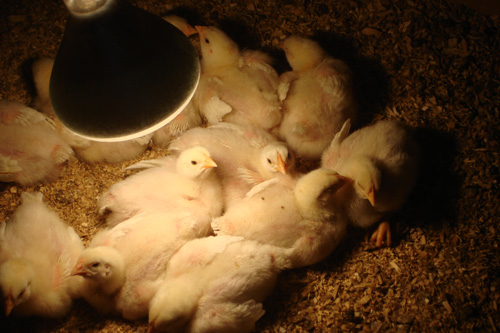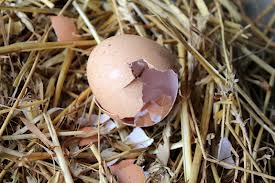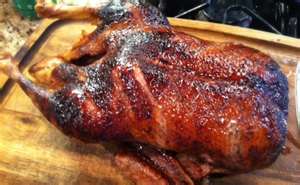Archives
- August 2018
- July 2018
- May 2018
- April 2018
- March 2018
- December 2016
- November 2016
- October 2016
- September 2016
- August 2016
- July 2016
- June 2016
- April 2016
- March 2016
- February 2016
- January 2016
- December 2015
- October 2015
- September 2015
- August 2015
- July 2015
- June 2015
- May 2015
- April 2015
- March 2015
- November 2014
- October 2014
- March 2014
- February 2014
- January 2014
- December 2013
- November 2013
- October 2013
- August 2013
- July 2013
- June 2013
- May 2013
- April 2013
- March 2013
- February 2013
- January 2013
- December 2012
- November 2012
- October 2012
- September 2012
- August 2012
- July 2012
- June 2012
- May 2012
- April 2012
- March 2012
- February 2012
- January 2012
- December 2011
- November 2011
- October 2011
- September 2011
- August 2011
- July 2011
- June 2011
- May 2011
- April 2011
- March 2011
- February 2011
- January 2011
- December 2010
- November 2010
- October 2010
- September 2010
- August 2010
- July 2010
- June 2010
- May 2010
- April 2010
- March 2010
- February 2010
- January 2010
- December 2009
- November 2009
- October 2009
- September 2009
- August 2009
- May 2009
- April 2009
- March 2009
Posts Tagged ‘Manure’
Raising Meat Chickens in Suburbia

From Day Old to Dinner Entrée – If you want to make sure the chicken in your oven is raised well and processed humanely –Raise them yourself!
Most of my friends cringe when I tell them that we raise our own meat chickens and my daughter NEVER tells her friends for fear they will avoid eating over. But, this relatively simple process has become an integral part of our suburban homestead and food storage plan.
I’ve always had laying hens to provide us with eggs for the table and manure for the garden. And, when the girls were too old to lay they got to live out their life scratching around for bugs, churning up the soil and adding manure where ever they went; a mutually beneficial relationship I think.
It wasn’t until my friend Sandy bought and raised her first batch of meat birds that I really started to get interested in raising our own chickens for meat. But, raising 50 chicks seemed a bit too ambitious for a beginner, not to mention someone who lived in suburbia. So, several years ago I began by raising 8 Cornish/White Rock crosses, usually referred to as Cornish Rocks. These fast growing birds are the same breed raised commercially and sold to restaurants and supermarkets either as whole birds or in cut-up parts.
My test project was a huge success! All 8 chicks lived to their 8-week maturity, were healthy and seemingly happy, and the processing of the birds was nothing like I had imagined. When the project was over and we were feasting on own homegrown chicken, juicy and full of flavor I was determined that meat chickens would be an annual crop raised on our little suburban homestead. Read the rest of the story »
Selecting Livestock for your Suburban Homestead

It’s that time of year, folks. SPRING—the time when chicks hatch, ewes lamb, cows calve, sows farrow, does kid and rabbits kindle. A farm is alive with life as each new addition is born. But, as suburban homesteaders can we experience the same pleasures of raising livestock for food and fiber on our city lots just as our friends in the country can? Yes, we can!
Instead of curling up with a poultry catalog, scanning the internet dreaming of what could be or bemoaning what you think you can’t have, why not look into what you can have?
Bringing home your first flock or herd, or adding to an already existing one can be an exciting time. But, there are some things you need to do first. The most important first step, and the one I always recommend to any new suburban livestock owner, is find out what you are allowed to have on your property. Some suburban homeowners will only be able to raise a few rabbits, chickens, ducks or maybe a turkey, while others, like me, on a larger lot with different zoning regulations can have a larger variety – sheep and pigs. Regardless of your situation, you can still raise some of the meat and eggs your family eats, and that is better than nothing.
Including livestock on your suburban homestead is the backbone of a diversified healthy farm system and one that should be seriously considered regardless of your lot size. Even a few laying hens can clean up kitchen scraps, produce eggs and provide manure for the garden. It’s a whole cycle, folks.
Once you have determined which animals you are allowed to have on your property, decide what you want to have and how many. If you are allowed to have rabbits, but don’t like rabbit meat then don’t raise rabbits, at least not for meat. Rabbits for fun and manure is another choice.
The amount of space you have available for raising livestock will also dictate what you can raise and how many. Different species have different space requirements—chickens and rabbits only a few feet per animal, turkeys quite a bit more. As an example, I am zoned to raise a steer on my property, but, with gardens, fruit trees, berry patches and my existing animals I don’t have adequate space available for an animal that will eventually grow to 1000 pounds or more. I am looking into raising a heritage breed which tends to be small, but I may not have enough space for that either, even though I am zoned for a steer. So, I am content with raising meat chickens and ducks, freezer lambs and pigs because I can comfortably house and raise these animals if I raise them at different times of the year.
When you have decided what to raise and have calculated how many of each species you have room for, now is the time to seek out a breeder. Read the rest of the story »
Hens eating their eggs? There is a reason.
One of the worst habits a hen can develop is eating eggs, whether your flock is for egg sales or just supplying your family. And, when she gets the taste of eggs it’s hard to stop her without persistence. But, don’t panic because it’s not always necessary to cull the offending egg eater.
Egg eating usually starts by accident, when a hen steps on or accidently cracks an egg. She pokes around, tasting something yummy inside and then goes hog wild breaking and eating eggs as soon as they’re laid. Many times the whole flock joins in the feast, leaving few whole eggs for family or farm.
The reasons behind eating eggs:
- Not Enough Calcium. When hens don’t get enough calcium their shells are not strong enough to withstand everyday life in the coop. Even minor bumps or knocks can cause an egg to crack. Commercial poultry feed don’t always give your girls enough of the mineral to produce a strong shell. Supplementing with crushed oyster shells or ground egg shells can help increase the calcium level. That’s right! Eggshells for the egg eater. But, make sure they are crushed or chopped fine so the hens won’t make the connection.
- Shallow Bedding. To give hens and eggs a good soft place to land make sure there is about 2” to 3” of bedding material, like shavings or straw, in each nesting box. Less bedding means hens are laying eggs on a hard surface, which can cause cracking. I have used both for years and prefer straw in the warmer months because it doesn’t pack down as much. But, in the winter I use a layer of shavings with straw on top, giving the girls added warmth in each box. Be sure to save or compost when you clean your boxes. All that dry matter and manure makes great compost material or side dressing for nitrogen loving plants.
- Not Enough Nesting Boxes. Your coop should have one nesting box for every four or five hens. They won’t hang a shingle out claiming a specific box as their own and you may find that they use a few of the same boxes, but more boxes gives them room spread out and can cut down on the skirmishes.
- Broody Hens. When a hen is broody or setting eggs she will stand her ground, trying to keep other hens off the nest. These tussles can cause broken eggs.
- Egg Collecting Times. Leaving eggs in the nest long after they are laid is an invitation to an egg eater. Eggs should be collected shortly after they are laid, if possible. This has always been a challenge on our farm because by the time hens lay we are off at work or school, leaving collecting until evening.
- Protein Deficient. Chickens require a high percentage of protein in their diet either from feed or other sources, and the lack of it can cause hens to crave eggs. So…give them what they want! Strange I know, but one source of protein can be eggs. That’s right, eggs. Adding a bit of scrambled eggs to their feed can help fill the protein gap.
- Lack of Privacy. Or, in this case “out of sight, out of mind”. If hens can’t see the eggs they are less likely to explore the nest. Draping the front of the nesting boxes can help.
A few other reasons hens will eat eggs is boredom and a lack of things to do. Give your hens a place to roost outside where they can watch the world, piles of leaves to scratch in provide hours of amusement, and hanging treats in a tree to occupy them.
Playing tricks on your hens can also help stop existing egg eaters.
Replace eggs with “fake” eggs like plastic, wood or ceramic, golf balls, or ping pong balls; anything small and round. When your hens go to peck these “eggs” they won’t break, nor will they find anything tasty inside.
Blow out a real chicken egg and refill it with something that won’t taste good like mustard or hot sauce. They’ll get the message that eggs are not good.
Hang curtains in front of nesting boxes to block the egg eater’s view. If they can’t see the eggs they won’t eat the eggs.
With a little creativity and trickery you can work your hens out of eating eggs instead of culling them.
The Duck Diaries
Counting Down
Well folks, the countdown is on. This time next week I’ll be packaging up twelve freshly processed ducks for the freezer. So far this has been a relatively easy meat project; just as simple as raising meat chickens, if you discount the water issue. But, I think the water would be a non-issue if I used an automatic water bowl similar to those used for dogs. That way the ducks could have an endless supply of water to drink and wash their faces in and I wouldn’t have to refill one-gallon water fonts four to five times a day. In reality the ducks use more water for washing themselves then they do for drinking. I have also decided that if I raise ducks again I will build a dedicated area that has more space and housing and figure out some way to manage the water splashing so the whole place doesn’t become a muddy mess. Right now they are in a corner of the barn. Although they have plenty of room there is no way for me to put together a set-up that allows them to go outside. I also think that more space will cut down on the manure build-up and I will use fewer bags of shavings for bedding.
I was asked if the ducks I raise will be less expensive than those you can buy in the stores. To be honest, I’m not sure. I haven’t calculated out all my expenses yet. But, what I do know is that I will have used 150 pounds of feed and about 6 bags of shavings by the time we butcher next weekend. I’m sharing the cost of the feed with sis and one bag of feed was free with a buy-one-get-one free coupon Brianne won at a sheep show. The cost of the ducklings was a trade with the hatchery for our Sebastopol gander that died shortly after we brought him home last year. The water is a big mystery because I don’t use a meter to track it. But, a rough idea of cost for someone thing of raising ducks would be:
$57.70 — 12 ducklings
$37.00 — 3 50# bags of feed
$40.50 — 6 bags of shavings
$135.20
Only our local gourmet stores and some ethnic stores carry duck meat. The gourmet stores charge almost $20 a pound for breast meat and slightly less for thigh and leg combos while the ethnic stores sell frozen packaged duck meat for about $16.00 for a package that is less than 3 pounds. This is one of the reasons we decided to raise our own. With the above numbers, our ducks will end up costing about $11.26 per duck. BUT…the big difference is our ducks will process out at about 5 pounds each—twice as heavy as anything in the markets.
For now though I’m keeping my eye on the ball and getting ready for butchering day.
Sandy and I are doing things a little differently this time. Instead of me packing up a load of birds and traveling to her farm she is coming to mine and bringing all the equipment with her—scalder, plucker, stainless steel table, cones, knives and scissors. I’ll supply the electricity for heating up the water in the scalder and an endless supply of water for rinsing and washing. We’ll set up on the patio where we will have easy access to electrical outlets and water, shade and the kitchen for ice and other necessities.
Should be interesting, folks.
Stay tuned. The whole process will be posted here next week.
Church Grows More Than Faith
… One foggy Maryland morning last spring, I was among more than 400 people who donned jeans and boots, packed shovels and hoes, and headed to…church. After months of hoarding leaves from suburban yards and gathering manure from local farmers, parishioners at Cedar Ridge Community Church in Spencerville were ready to spend a Sunday transforming hard clay into dark, rich humus.
Creating a farm might seem an unlikely mission for a congregation of urban dwellers and suburbanites. For Cedar Ridge, the idea had grown out of a year of prayerful reflection about how to use our 63 acres in a way that would cherish the earth and its inhabitants. We also hoped that working the soil and giving organic food to our neighbors in need would help us to grow spiritually.
Click Here to read how a small Maryland congregation came together to build a church garden; cherishing the earth and feeding a community in need.


Recent comments
Aenean nonummy hendrerit mauris. Phasellus porta.